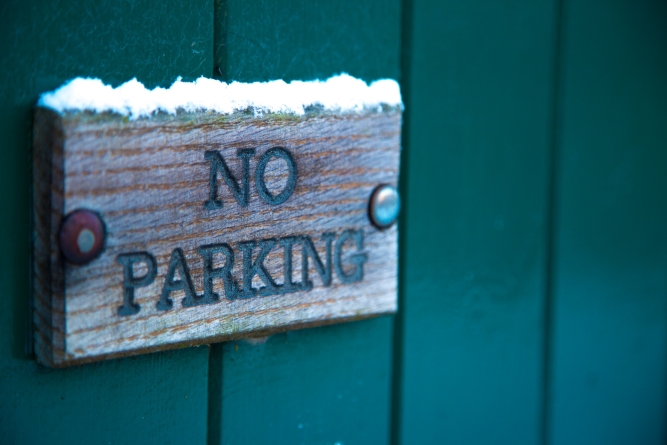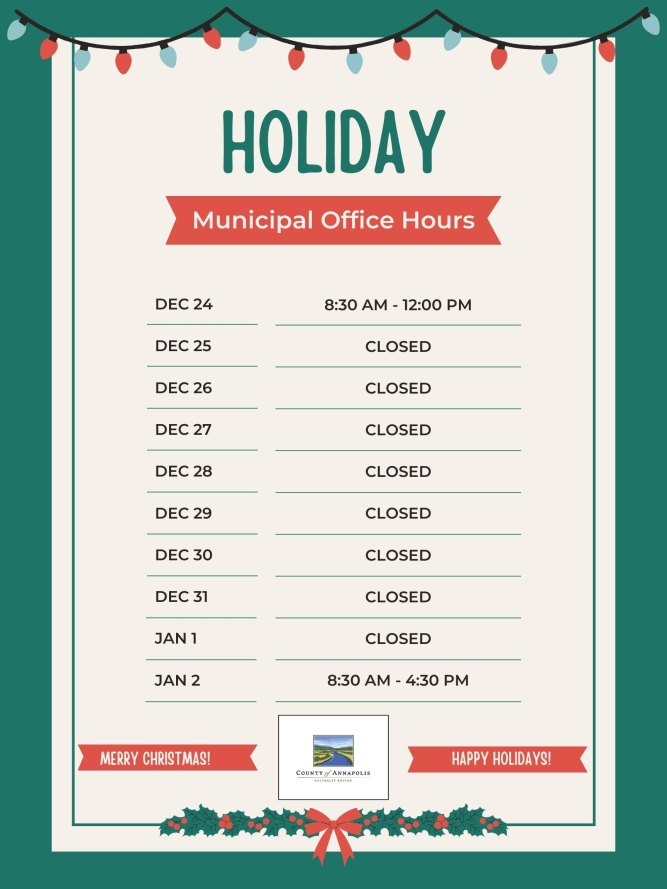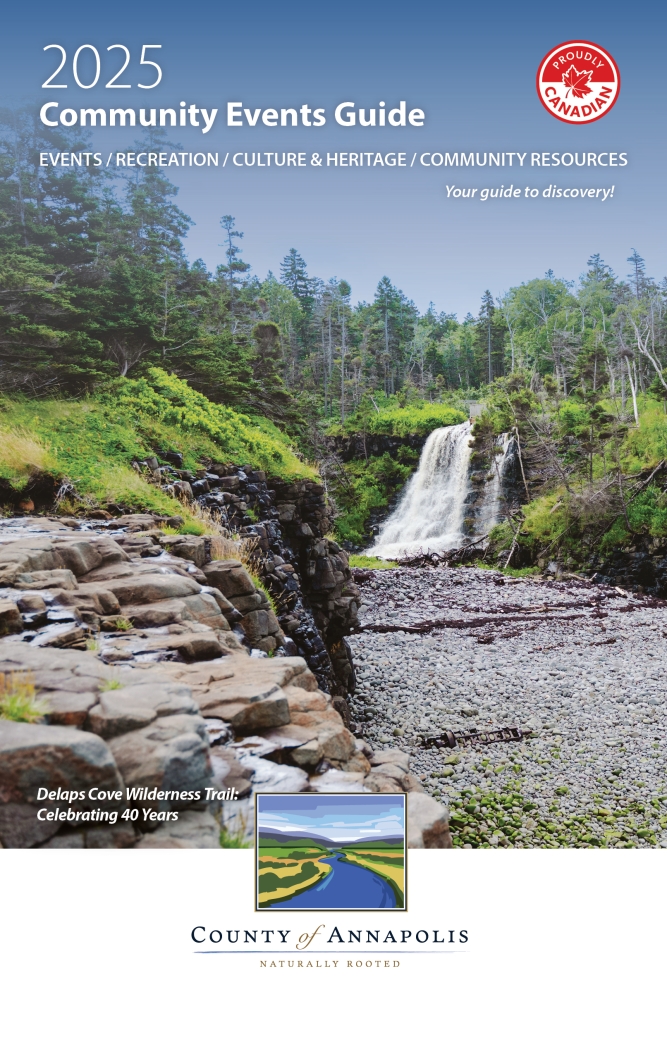Let's shed some light on your search




Seven steps to cold weather safety
Winter weather has arrived in much of the country. Do you know the signs of hypothermia, and what to do if you get frostbite? Read on to make sure you're ready for cold weather!
1) Listen to the weather forecast
- Check the Environment Canada weather forecast before going out.
- Listen for a wind chill warning. Warnings are based on local climate and are issued when significant wind chills are expected.
- Visit Environment Canada's new Weather and Meteorology website: http://ec.gc.ca/meteo-weather/
Weather forecasts are available through radio and TV broadcasts, Environment Canada's Weatheradio service, and online at www.weatheroffice.gc.ca.
2) Plan ahead
- Develop a cold weather safety plan in advance to ensure that safety concerns are addressed when it's very cold, or when the wind chill is significant. For example, schools could hold recess indoors, outside workers could schedule warm-up breaks, and those involved in winter recreation could reduce the amount of time they spend outdoors.
3) Dress warmly
- Dress in layers, with a wind resistant outer layer.
- When it is cold, wear a hat, mittens or insulated gloves. Keep your face warm with a scarf, neck tube or facemask.
- Wear warm and waterproof footwear. When it is very cold, or when the wind chill is significant, cover as much exposed skin as possible. Your body's extremities, such as the ears, nose, fingers and toes lose heat the fastest.
4) Seek shelter
- When the wind chill is significant, get out of the wind and limit the time you spend outside.
5) Stay dry
- Wet clothing chills the body rapidly.
- Remove outer layers of clothing or open your coat if you are sweating.
6) Keep active
- Walking or running will help warm you by generating body heat.
7) Be aware
- Watch for signs of frostbite and hypothermia (see below).
- Some people are more susceptible to the cold, particularly children, the elderly and those with circulation problems.
- Check on elderly relatives and neighbours to ensure they are warm enough and have sufficient supplies, particularly when the weather is cold or snowy. They might not feel comfortable going outside to shop and may require food, medications and other supplies.
- The use of alcohol, tobacco and certain medications will increase your susceptibility to cold.
Hypothermia
- Being cold over a prolonged period of time can cause a drop in body temperature
- Shivering, confusion and loss of muscular control (e.g., difficulty walking) can occur.
- It can progress to a life-threatening condition where shivering stops or the person loses consciousness. Cardiac arrest may occur.
What to do:
- Get medical attention immediately.
- Lay the person down and avoid rough handling, particularly if the person is unconscious.
- Get the person indoors.
- Gently remove wet clothing.
- Warm the person gradually and slowly, using available sources of heat.
Frostbite
- A more severe condition, where both the skin and the underlying tissue (fat, muscle, bone) are frozen.
- Skin appears white and waxy and is hard to the touch.
- No sensation - the area is numb or tingling.
What to do:
- Frostbite can be serious, and can result in amputation. Get medical help!
- Do not rub or massage the area.
- Do not warm the area until you can ensure it will stay warm.
- Warm the area gradually; use body heat, or warm water (40°C to 42°C). Avoid direct heat which can burn the skin.
getprepared.gc.ca/cnt/rsrcs/sftt
COLD WEATHER SAFETY TIPS FROM CANADIAN RED CROSS:
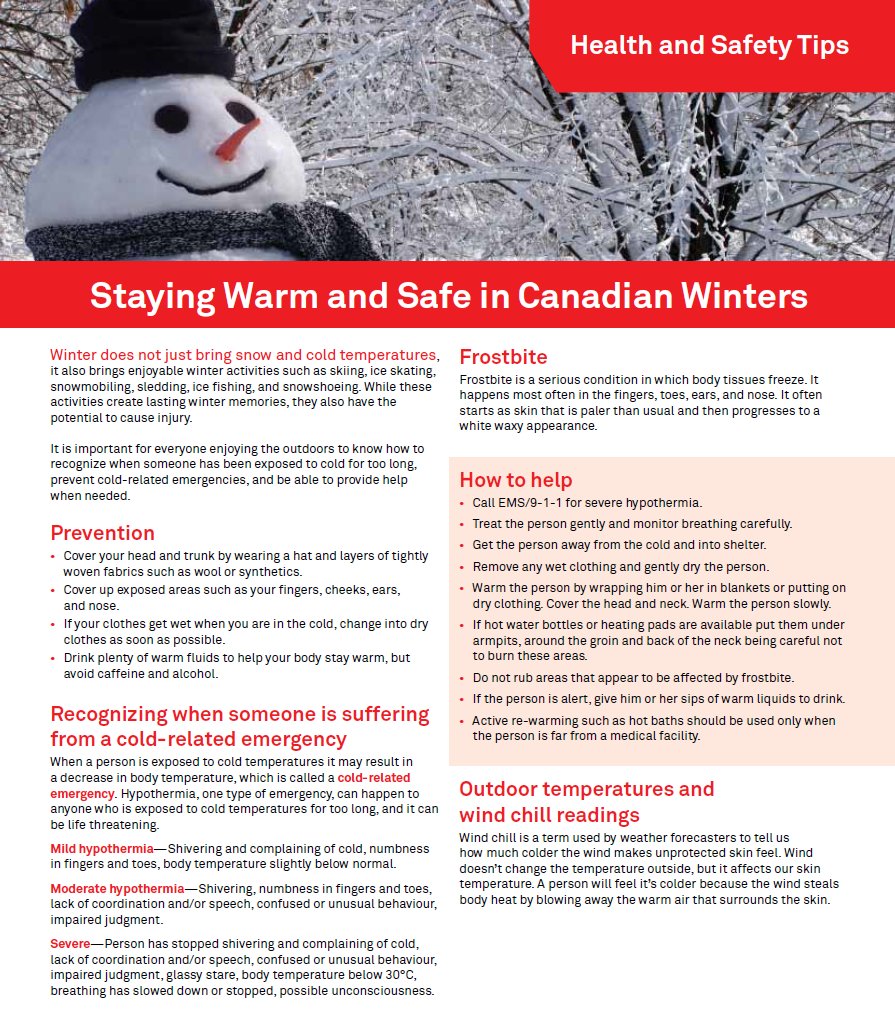
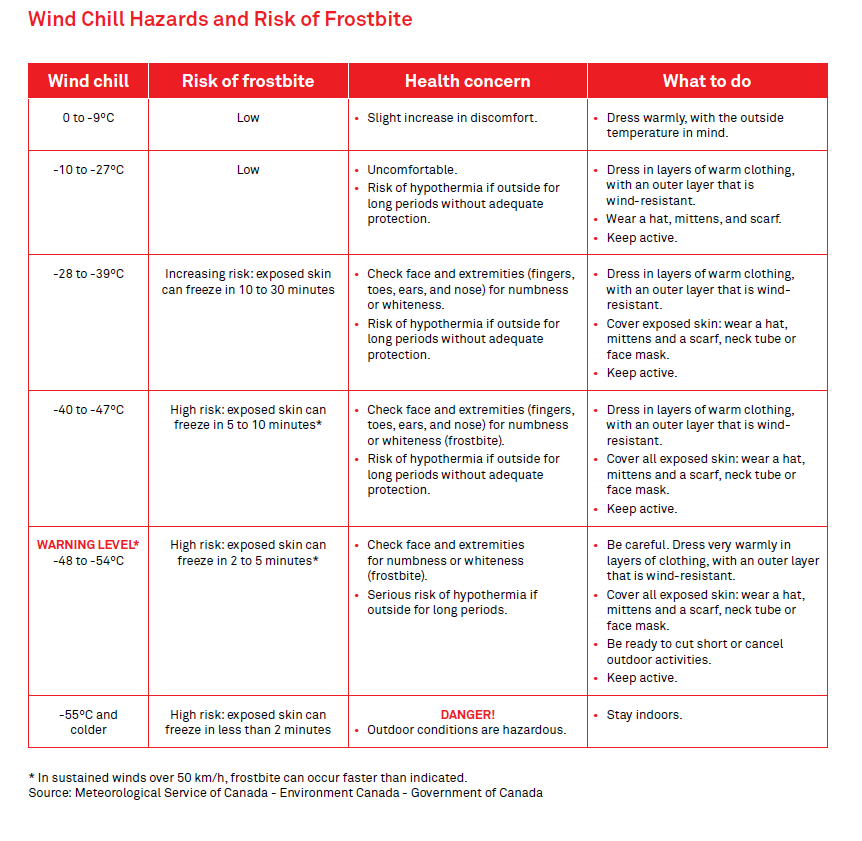
Upcoming Events
| Planning Advisory Committee Meeting 12 Jan 2026 06:00PM |
| Public Hearing - Municipal Heritage Deregistration 20 Jan 2026 11:00AM |
New Information to This Site
- Employment Opportunity - Facility and Parks Labourer
- Employment Opportunity - Building/ Fire Official (Level 1)
- Employment Opportunity - Manager of Municipal Operations
- Procurement Opportunity - 3-D Visualization for Flood Hazard Communication Municipal Flood Line Mapping - 2025-26
- A Heartfelt Thank You - West Dalhousie Wildfire
- Council Highlights - December 16, 2025
- County Wide Planning Area
- 2025 Municipal Offices Holiday Hours
- Holiday Greetings from Warden Diane LeBlanc
- VWRMA - New Recycling Program
- East End Planning Area
- COUNCIL HIGHLIGHTS - November 18, 2025

